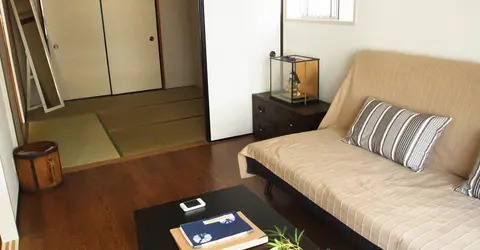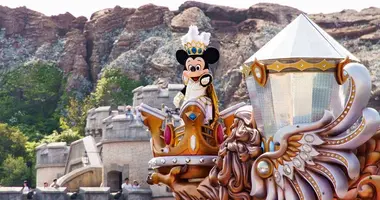Geihinkan Akasaka Palace: A grand state guest house in Tokyo
- Published on : 01/02/2024
- by : Japan Experience
- Youtube
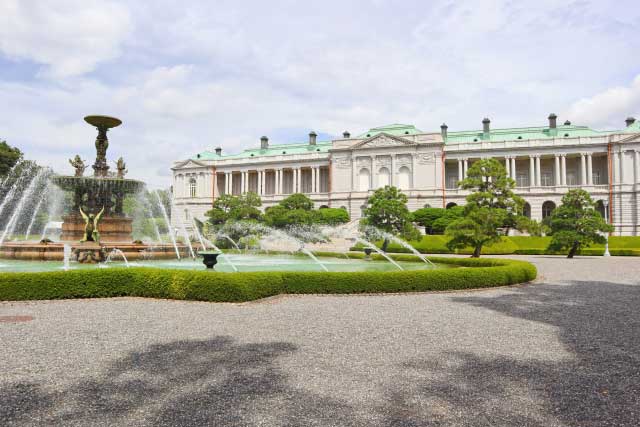
Nestled in the heart of Tokyo, the Geihinkan Akasaka Palace stands as a magnificent testament to Japan's architectural prowess and diplomatic importance. This neo-baroque masterpiece, originally built as an imperial residence, now serves as Japan's primary state guest house. With its blend of Western design and Japanese craftsmanship, the palace offers visitors a unique glimpse into the country's rich cultural heritage and its role on the global stage. From its opulent interiors to its meticulously manicured gardens, the Geihinkan Akasaka Palace continues to captivate both international dignitaries and curious tourists alike.
History and transformation of Akasaka Palace
The story of Geihinkan Akasaka Palace begins in the late 19th century, during Japan's rapid modernization. Construction started in 1899 and was completed in 1909, under the direction of architect Katayama Tōkuma, who studied under British architect Josiah Conder. Originally built as the Crown Prince's Palace (Tōgū Gosho), it was designed to showcase Japan's adoption of Western architectural styles while retaining elements of traditional Japanese aesthetics.
After World War II, the palace's function evolved. It briefly served various governmental purposes, including housing the National Diet Library from 1948 to 1961. A significant turning point came in 1974 when, following extensive renovations, the palace reopened as the State Guest House (Geihinkan). This transformation marked Japan's increasing engagement with the international community in the post-war era.
In recognition of its historical and architectural significance, the Geihinkan Akasaka Palace was designated as a National Treasure of Japan in 2009, exactly 100 years after its initial construction. This designation, a first for any building constructed after the Meiji Restoration, underscores the palace's importance in Japanese cultural heritage.
Architecture and design of the Western-style main building
The Geihinkan Akasaka Palace is a stunning example of neo-baroque architecture, drawing inspiration from European palaces such as the Hofburg in Vienna. The main building boasts an impressive 15,000 square meters of floor space, making it one of the largest structures built during the Meiji period.
The palace's exterior features a symmetrical façade with ornate decorations, reminiscent of European royal residences. The grand entrance, adorned with a majestic staircase and marble checkered flooring, immediately sets the tone for the opulence within. Visitors are greeted by eight Corinthian pillars made of Italian marble in the large hall, showcasing the fusion of Western architectural elements with Japanese craftsmanship.
Inside, the palace's rooms are a testament to the skill of both Japanese and international artisans. The interior of the Geihinkan Akasaka Palace features:
- Elaborate ceiling paintings
- Intricate gold leaf decorations
- Crystal chandeliers
- Tapestries handmade in Nishijin, Kyoto
- A blend of Western and Japanese motifs in reliefs and sculptures
Each room has its own unique character and purpose, from the Kacho no Ma (Flowers and Birds Room) used for banquets to the Asahi no Ma (Morning Sun Room) reserved for high-level meetings.
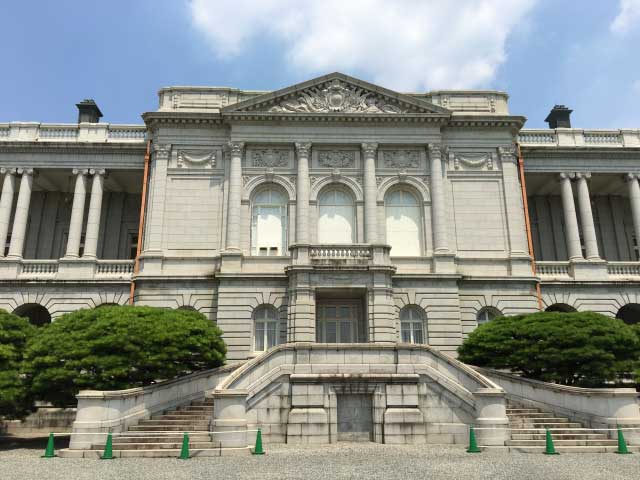
The Japanese-style Annex: A blend of tradition and diplomacy
In 1974, to complement the Western-style main building, a Japanese-style annex called Yushintei was added to the Geihinkan complex. This addition allows for a more traditional approach to hosting international guests, offering them an authentic experience of Japanese culture and hospitality.
The Yushintei features:
- A main Japanese-style room with tatami flooring, used for formal dinners and cultural demonstrations
- A tea room for traditional tea ceremonies
- A small restaurant area for serving Japanese cuisine like sushi and tempura
- A serene Japanese garden with a koi pond and bonsai trees
This harmonious blend of Western grandeur and Japanese refinement allows the Geihinkan Akasaka Palace to cater to a wide range of diplomatic functions and cultural exchanges.
Notable rooms and their functions within the palace
The Geihinkan Akasaka Palace boasts several remarkable rooms, each serving specific diplomatic and ceremonial purposes:
1. Kacho no Ma (Flowers and Birds Room): This grand banquet hall can accommodate up to 130 guests. It features 30 round cloisonné panels created by painter Watanabe Seitei and cloisonné artist Namikawa Sosuke, depicting various flowers and birds.
2. Asahi no Ma (Morning Sun Room): Considered the room of highest status, it's used for top-level meetings and as a farewell salon for conversations with the Emperor. The ceiling painting features the goddess Aurora with the morning sun.
3. Sairan no Ma (Pheasant Room): This room serves as a waiting area before banquets or high-level meetings. It's designed in the French Empire style, with extensive use of gold leaf and large mirrors to create an illusion of greater space.
4. Hagoromo no Ma (Feather Robe Room): Used for cocktail receptions and meetings, this room resembles the Mirror Room in Versailles. It features an orchestra box and the largest chandeliers in the building.
These rooms showcase the palace's versatility in hosting a wide range of diplomatic events, from formal state dinners to intimate discussions between world leaders.
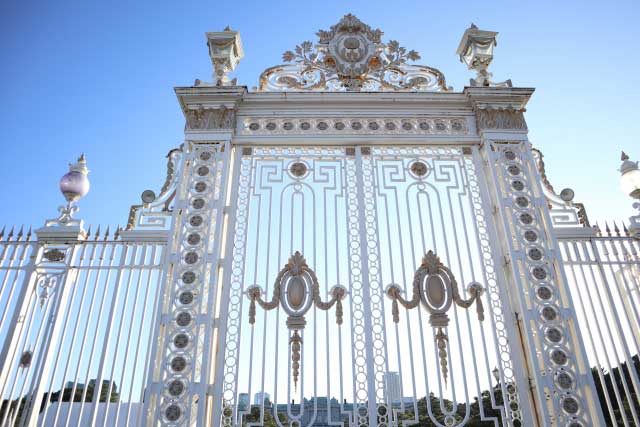
Visiting Akasaka Palace: Tours, access, and practical information
The Geihinkan Akasaka Palace is open to the public when not in use for official functions, offering visitors a rare glimpse into this historic and diplomatically significant venue. Here's what you need to know for your visit:
Tour Options:
- Geihinkan & Garden (Non-guided): Explore the main building and gardens at your own pace.
- Japanese Annex & Garden (Guided) + Geihinkan (Non-guided): A comprehensive tour including the Japanese-style annex.
- Japanese Annex (Guided) + Garden & Geihinkan (Non-guided): Focus on the traditional Japanese elements of the palace.
- Garden (Non-guided): Enjoy the beautiful grounds surrounding the palace.
Admission Fees: Prices range from 300 yen for the garden-only option to 2,000 yen for the full guided tour, with discounts available for students.
Access: The palace is a 5-minute walk from Yotsuya Station, accessible via the JR Chuo/Sobu Line and the Marunouchi Subway Line.
Important Notes:
- Check the Geihinkan website for up-to-date opening schedules, as the palace may close on short notice for official functions.
- Advance reservations are recommended, especially for guided tours.
- Children under elementary school age are not permitted in certain areas.
For a more detailed list of points to note before your visit, consult the official Geihinkan entry rules.
Significant events and dignitaries hosted at Geihinkan Akasaka Palace
Since its transformation into a state guest house in 1974, the Geihinkan Akasaka Palace has played host to numerous world leaders and significant international events:
- 1974: U.S. President Gerald Ford became the first official state guest, marking the first visit of an incumbent U.S. President to Japan.
- 1975: Queen Elizabeth II of the United Kingdom visited, planting two oak saplings from Windsor Castle in the palace grounds.
- 1979, 1986, and 1993: The palace hosted G7 summit meetings, cementing its role in global diplomacy.
- 1991: Soviet President Mikhail Gorbachev planted a tree in the palace gardens during his state visit.
- 2019: The palace served as a venue for meetings between Prime Minister Shinzo Abe and dignitaries from about 50 countries over just five days.
These events highlight the Geihinkan Akasaka Palace's crucial role in facilitating high-level diplomatic engagements and fostering international relations.
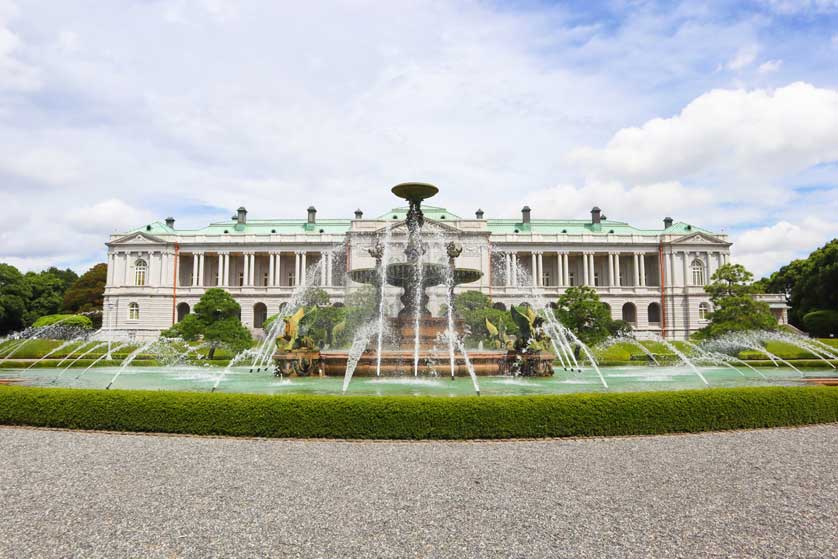
The role of Akasaka Palace in modern Japanese diplomacy
In today's global landscape, the Geihinkan Akasaka Palace continues to be an indispensable asset in Japan's diplomatic arsenal. Its unique blend of Western architecture and Japanese aesthetics serves as a powerful symbol of Japan's position as a bridge between East and West.
The palace's role in modern Japanese diplomacy includes:
- Hosting state visits: Providing a prestigious venue for bilateral meetings and state banquets.
- Facilitating international conferences: Offering a secure and impressive setting for multilateral discussions on global issues.
- Cultural diplomacy: Showcasing Japanese art, craftsmanship, and hospitality to foreign dignitaries.
- Public diplomacy: Opening its doors to the public, fostering understanding of Japan's diplomatic efforts among its citizens.
As Japan continues to navigate complex international relationships, the Geihinkan Akasaka Palace stands as a testament to the country's commitment to global engagement and cultural exchange. Its ongoing restoration and preservation efforts ensure that this architectural gem will continue to serve as a beacon of Japanese diplomacy for generations to come.
Whether you're a history enthusiast, architecture buff, or simply curious about Japan's role on the world stage, a visit to the Geihinkan Akasaka Palace offers a unique opportunity to step into the realm of international diplomacy and experience a vital piece of Japan's modern heritage. As you walk through its grand halls and meticulously maintained gardens, you'll gain a deeper appreciation for the delicate balance of tradition and progress that defines Japan's approach to global relations in the 21st century.


